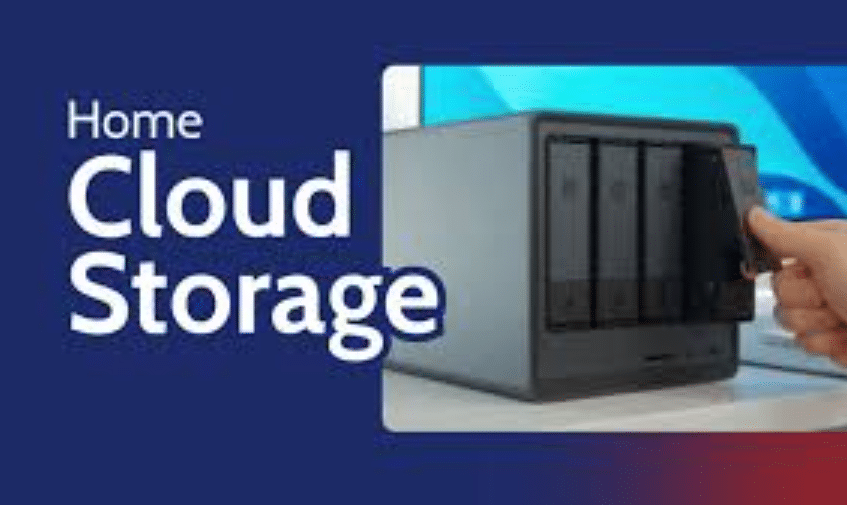Home Cloud Server – In an age where data is king and cloud storage services like Google Drive, Dropbox, and iCloud dominate the landscape, a growing number of tech-savvy individuals are looking for more control, privacy, and flexibility. This has led to the rising popularity of home cloud servers—personal, self-hosted systems that bring the cloud into your own living room.
Whether you want to host your own media library, back up your devices, or manage your smart home data privately, building a cloud server at home puts the power back into your hands. In this article, we’ll explore what a home cloud server is, why it’s worth considering, how it works, the best hardware and software options, and step-by-step guidance for setting up your own private cloud.

What Is a Home Cloud Server?
A home cloud server is a personal server—usually built from a PC, mini-computer like a Raspberry Pi, or a NAS (Network Attached Storage) device—that runs cloud software to store, share, and access data over the internet or local network.
Unlike third-party cloud providers that store your files on remote servers, a home cloud server stores everything in your physical possession. You can access your files from anywhere (as long as your home internet is active), stream media, sync devices, and even create user accounts for family members.
Why Set Up a Home Cloud Server?
1. Full Data Ownership
You’re not handing your files to any external provider. Your data stays with you—100% owned, 100% private.
2. No Monthly Fees
After the initial investment in hardware, you eliminate recurring cloud storage costs from services like iCloud, Dropbox, or Google One.
3. Privacy and Security
Control your own encryption, firewall, and user access policies. There’s no need to worry about external data breaches or surveillance.
4. Customization
Host your own applications, integrate smart home devices, stream personal media, or even run a personal website—all from one central hub.
5. Learning Experience
For tech enthusiasts, building and managing your own cloud server offers a valuable learning opportunity in networking, Linux, security, and system administration.
How Does a Home Cloud Server Work?
At a high level, a home cloud server functions like a mini data center:
-
Hardware (e.g., a server, Raspberry Pi, or NAS device) acts as the core system.
-
Cloud software like Nextcloud or ownCloud provides a user interface and functionality similar to Dropbox or Google Drive.
-
Networking configuration allows remote access through port forwarding, dynamic DNS, or VPN tunneling.
-
Storage can include hard drives, SSDs, or RAID arrays for redundancy and speed.
-
Security layers such as encryption, firewalls, and SSL certificates protect your data.
You interact with your cloud server through a browser or app, accessing files, photos, calendars, and documents from anywhere.
Hardware Options for a Home Cloud Server
1. Old PC or Laptop
Repurpose an unused computer as a full-fledged server. It’s powerful, upgradable, and perfect for experimentation.
2. Raspberry Pi
The Raspberry Pi 4/5 is a low-power, budget-friendly option for basic cloud needs like file sharing or personal backups.
3. NAS Devices (e.g., Synology, QNAP)
These are plug-and-play solutions designed for file storage and cloud access. Ideal for those who want simplicity and reliability.
4. Intel NUC or Mini PC
Compact and powerful, great for users who want more control than a NAS but with smaller footprints than full PCs.
5. Custom-Built Server
For tech enthusiasts or homelab builders, a DIY server with RAID configurations, ECC RAM, and server-grade CPUs is the ultimate setup.
Recommended Cloud Server Software
1. Nextcloud
-
Open-source, user-friendly, and highly customizable
-
Features include file sharing, calendar, contacts, video calls, and password management
-
Extensive app ecosystem
2. ownCloud
-
Another powerful self-hosted cloud platform
-
More business-focused with enterprise support
-
Strong file sharing and collaboration tools
3. Seafile
-
Lightweight, fast, and efficient
-
Great for syncing large numbers of files with version control
4. Pydio Cells
-
More enterprise-grade, focused on compliance and security
-
Clean interface and advanced admin tools
5. Tonido
-
Simple cloud access and media streaming
-
Easy setup, great for beginners
6. FileRun
-
Lightweight, simple alternative to Nextcloud
-
Easy to use with a modern UI
Key Features to Expect
-
File Sync and Share: Access and synchronize files across all your devices
-
Media Streaming: Stream music and videos directly from your server
-
Backup Services: Automate device and phone backups
-
User Accounts: Create individual accounts for family or coworkers
-
Mobile Apps: Access your cloud via iOS or Android apps
-
Encryption and SSL: Secure your connections and data
-
Integration: Add calendars, contact lists, notes, or even email clients
How to Set Up Your Own Home Cloud Server (Step-by-Step)
Step 1: Choose Your Hardware
Select based on your use case:
-
Raspberry Pi for lightweight tasks
-
Old PC or NAS for moderate to heavy usage
-
Dedicated server for high availability
Step 2: Install Operating System
-
For Raspberry Pi: Raspberry Pi OS or Ubuntu Server
-
For PC: Ubuntu Server, Debian, or your preferred Linux distro
-
For NAS: Usually comes pre-configured with OS
Step 3: Install Cloud Software
Example with Nextcloud:
-
Install Apache/Nginx, MySQL, PHP
-
Download Nextcloud from nextcloud.com
-
Configure virtual host
-
Access via your browser at
http://yourlocalip/nextcloud -
Set admin credentials and begin setup
Step 4: Enable Remote Access
-
Use port forwarding on your router (e.g., forward port 443 for HTTPS)
-
Use Dynamic DNS (e.g., DuckDNS) to map your home IP to a domain name
-
Secure the site with Let’s Encrypt SSL certificate
Step 5: Secure Your Server
-
Change default passwords
-
Set up a firewall (UFW or iptables)
-
Use fail2ban to prevent brute-force attacks
-
Regularly update your system and software
Real-World Use Cases
1. Family Cloud
Host photos, documents, and calendars for your entire household with shared and private folders.
2. Media Center
Stream personal movies, music, and TV shows using Nextcloud + Jellyfin or Plex.
3. Freelancer Workspace
Keep project files, client documents, and task lists synced and secure on your personal cloud.
4. Smart Home Hub
Integrate your server with Home Assistant or MQTT brokers to control and monitor smart devices.
5. Personal Backup Station
Automate full backups of phones, tablets, and laptops to your home server.
Pros and Cons of a Home Cloud Server
Pros:
-
Full control over your data
-
No recurring fees
-
Customizable to your needs
-
Expandable and upgradeable
-
Can be more private and secure than public cloud
Cons:
-
Requires technical knowledge
-
Needs regular maintenance
-
Dependent on home internet uptime
-
Higher upfront cost
-
Risk of data loss without proper backups
Best Practices for Managing Your Home Cloud
-
Back Up the Server: Use external drives or cloud snapshots
-
Monitor Uptime: Use tools like Uptime Kuma to monitor server health
-
Limit User Access: Assign different permissions to each user
-
Regular Updates: Keep OS and software patched
-
Use Strong Passwords and 2FA: Especially for remote access
Future of Home Cloud Servers
As privacy becomes more important and cloud subscription prices increase, home cloud servers will become more mainstream. Innovations like:
-
Low-power ARM servers
-
Plug-and-play open-source NAS devices
-
Private AI assistants
-
Edge computing integration
…will make setting up and managing home clouds easier, even for non-technical users.
Conclusion
A home cloud server is more than a tech hobby—it’s a step toward digital independence. Whether you want to escape cloud subscriptions, safeguard your data, or just explore the world of self-hosting, running your own cloud server gives you power, privacy, and peace of mind.
With the right hardware and a bit of learning, you can build a reliable system tailored to your life—something the big tech companies simply can’t offer. In a world where control over personal data is becoming a luxury, your home cloud could be your most valuable digital asset.

